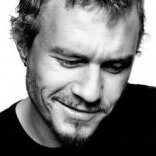
Grant
Nomads-
Content Count
41 -
Joined
-
Last visited
Content Type
Profiles
Forums
Calendar
Everything posted by Grant
-
These shots are of opposite ends of main street. The paved road from Kismayu ended about where the first photo was taken. That is the minaret of the mosque on the left. At that time, Jilib was the admistrative center for Juubbada Hoose. Gedo had not yet been created. The white building was built by the Italians and was the District Commisioner's office on the left and the post office on the right. You see a couple power poles. By 1967 we had intermittant electricity for a couple of hours in the evening, from a gas generator next to the DC's office, but only at that end of town.
-
Here's a first installment. I would really like to have them in some permanent place, all together.
-
Hi Nuune- Hi Ghelle.T, I do know about Jalle Hersi. So far, he has been the only one of my acquaintences I have been able to relocate. I finally found the pictures I took in Jilib in 1966. I e-mailed admin to ask if he wanted them, but have not received a reply. The stock photos for profit link does not work. Would folks here like to see them, and how does one post?
-
The constructions at Tallex are no earlier than twentieth century. But the underground stream that makes life there possible has been there much, much longer. My quess is that the rock falls around the stream and several areas near it will eventually provide major archaeological finds.
-
I was at Tallex in 1966. The British bombs did very little damage. They destroyed one granary and damaged a second of three. The three tombs and the fort itself were barely scratched. I understand there were only five men present when the British ground forces arrived. The Sayyid fled south with a few men with the idea of raising a new army there, but was almost immediately opposed by the Aweysiya, who wanted revenge for the murder of Aweys al Baraawe at Biyoole in 1908. In the fighting, he received a wound under the left arm and died of influenza and his wound at Imo (Immay) in Ethiopia in late 1920. I was told the stones for building these forts were assembled by a group of men dragging them on camel skins. The workmanship was exquisite. The fort at Silsilad is much larger.
-
Salman Rushdie is getting a knightship and there are a good many now saying Muslims are a subversive COLONIAL power growing like a cancer in the West. I watched part of a debate the other night between radical and moderate Islamic clerics in Ireland. The audience was virtually all Irish Catholic, and they were soaking it up. There are issues here that are not going away soon. Somalis claim to be 100% Muslim and get thoroughly upset when any other religion sets up shop in any of their degaans. This is human nature that is not limited to the Horn. I don't really know how serious this kind of article is, but I certainly don't find it surprising.
-
Thanks for the warning Baashi. As a newbie, it is not easy considering myself awoowe, in spite of my age. In any case, I will be proud just to be adeer. I should probably have tried to go back to the original site, and I will take your warning to heart.
-
Here are some additional shots that include the road: http://www.somalinet.com/exit/?exit=http://www.ceegaag.com/Qoraalada/Muuqaal/buurta_sheekh.htm For some reason this link is not holding. Search "Photos from the Nomadic North" on Snet or go to page 13 of the Snet General Forum.
-
Muj:Red Sea, She lives in New Jersy and teaches at William Paterson University. You can e-mail her at jmdhaem@aol.com . "I am always very pleased to hear from former students or friends in Somalia." Re: the pictures- I am being accused on Snet of being a selfish liar for "withholding" the pictures, or possibly worse yet, not having them. I want to make it clear that IF I still have any, they are VERY low quality and all but two or three of them show nothing significant. The person making these accusations clearly does not understand the magnitude of the mess in my garage. In other words, no one should have any great expectations here, and I will get back to you if and when something materializes. Sheeesh..
-
I haven't figured out yet how to edit a post. The PC link is not working. Go to this main link, then bulletin boards, then Somalia. http://peacecorpsonline.org/
-
Muj: Red Sea, The PC website says she was in the group that started in 1968. There is a post addressed to her on the message board. http://peacecorpsonline.org/messages/me ... /3531.html You might find this post on Snet interesting: http://www.somalinet.com/forum/viewtopic.php?f=18&t=102600&p=1342037&hilit=#p1342037
-
Jacaylbaro, I only slept in Hargeisa two nights and did not get to know anyone there. Here are two posts from Snet describing my first few days in Somalia: http://www.somalinet.com/forum/viewtopic.php?f=18&t=48488&p=658569&hilit=#p658569 http://www.somalinet.com/forum/viewtopic.php?f=18&t=48582&p=660078&hilit=#p660078
-
Originally posted by Libaax-Sankataabte: [QB] ^^Grant, The "Latin Script" was adopted by Barre. Osmania was invented in the 1920's and was never adopted. /QB] I did some checking and it appears I did get confused. However, the "Latin Script" used today is not the one used before 1969, and the changes are the ones I mentioned. I do wish I had saved some old Dalkas. I will look for the pictures.
-
Originally posted by Dhulqarnayn -alSumaale: Interesting story Mr Grant, during the 50s,60s Osmanya was used in Somalia to print news papers for the public and even letters for government officials, did you ever teach this script to your students? and do you have any examples of old newspapers and school books written with this script? Osmanya was adopted under the Barre administration in the early Seventies. Hersi Magan developed one of several scripts used before Osmanya. It used H overstruck with / for X and ' for C. It did not use doubled vowels, but most of the rest was the same. I have a book of short poems somewhere...... We used standard Dick and Jane series East African books in my classes, standard English. My afSomali was, and remains, horrible.
-
I have been to Hargeisa, Taleex, Eyl, Dhuusamareb, Beledweyne, Afgoi, Merka, Shangaanii and Hamarcaadde, Barawe, Kismayu, Jamame and several of the small villages around Jilib. Hersi Magan Isse, the father of Ayaan, was my language instructor at Columbia. My closest friend and the only one I have a complete name for was Abdi Salaad Sugule, who at that time was secretary to the Somali-Soviet agricultural project just outside Jilib. My landlord, who actually visited me here in the States in late summer of 1969, was director of the "Agraria", the government research station across the river for at least 1966-69. In Osmaniya script I think his name would be written Siid Cali, but I never knew the third name. He was enough older than me I doubt he is alive, but two of his children were students of mine and I would love to hear from any of his family. Photography was not a generally approved hobby in the Sixties, at least not for gallo. I did have a camera and do have some very grainy black and whites somewhere of my classes and a few friends. They are somewhere out in the garage where I have not been able to put my hands on them in years. No guarantees since it's very full and messy out there, but I will look.
-
Grant is my real name. I am a white American, a former Peace Corps volunteer. I taught English at the government school in Jilib in 1966-67, and was cut off from my friends in 1969. I have been active on Snet for the past two years. Many of the posters who appealed most to me on Snet have moved on and the current crop are a bit young for some discussions. I hope to bump into some old friends here.


